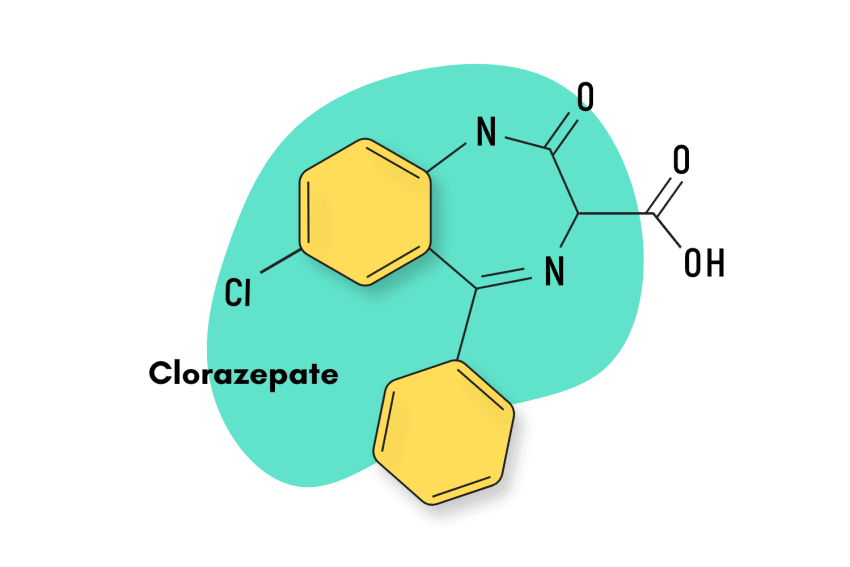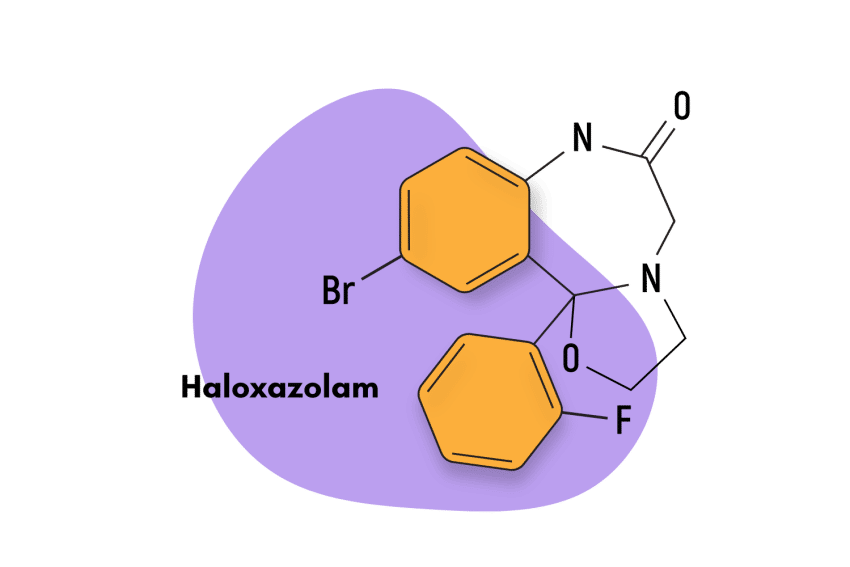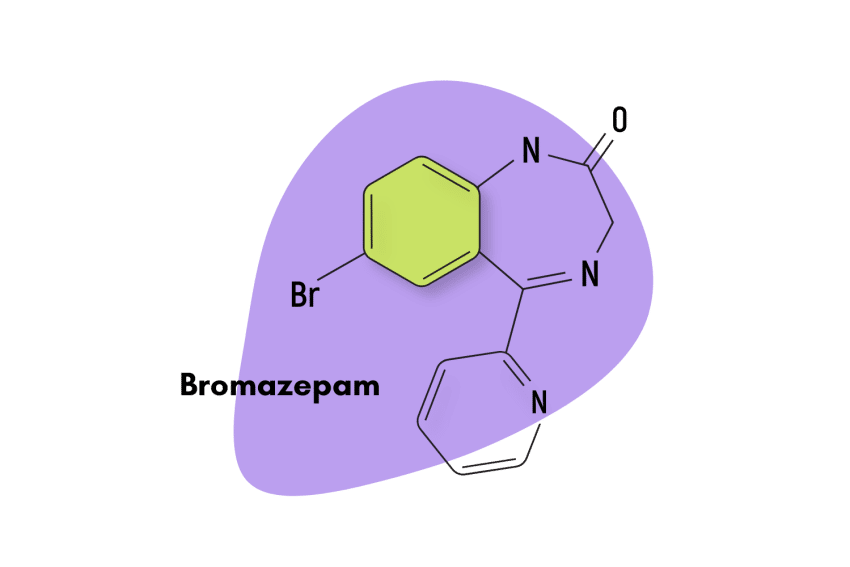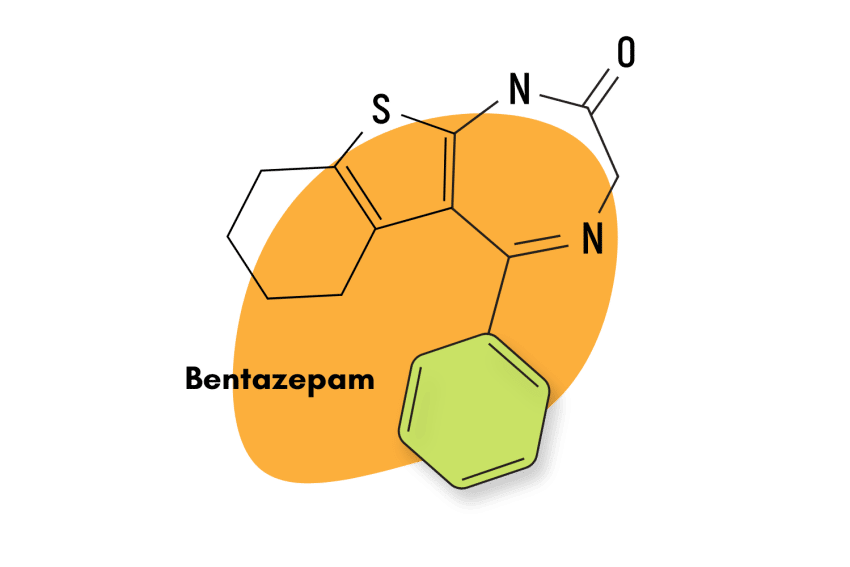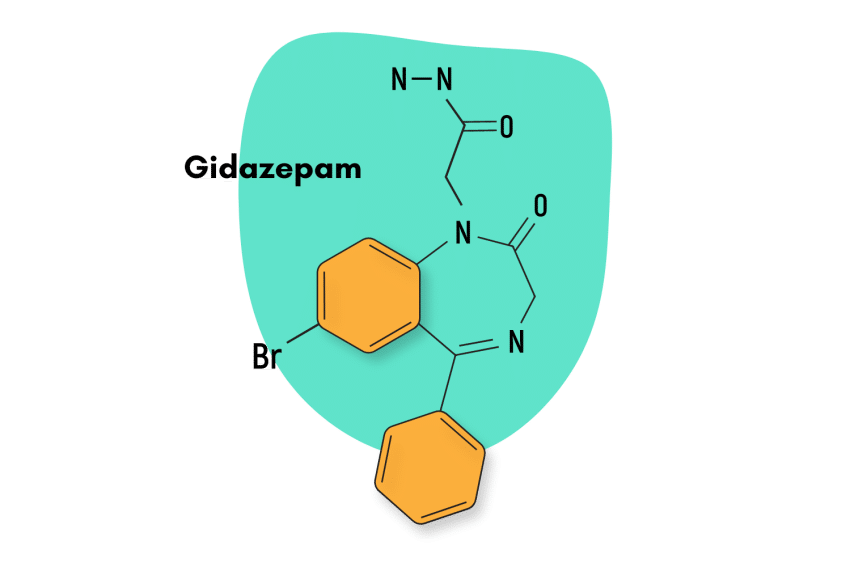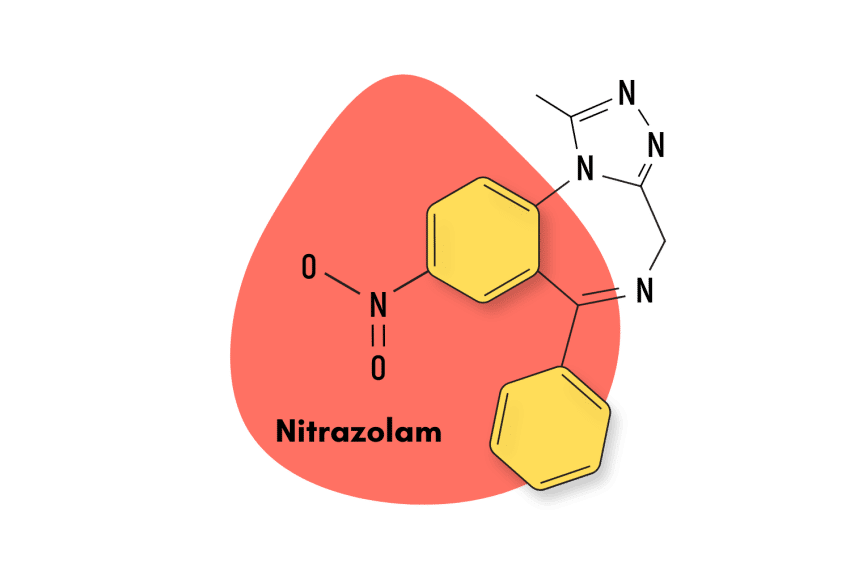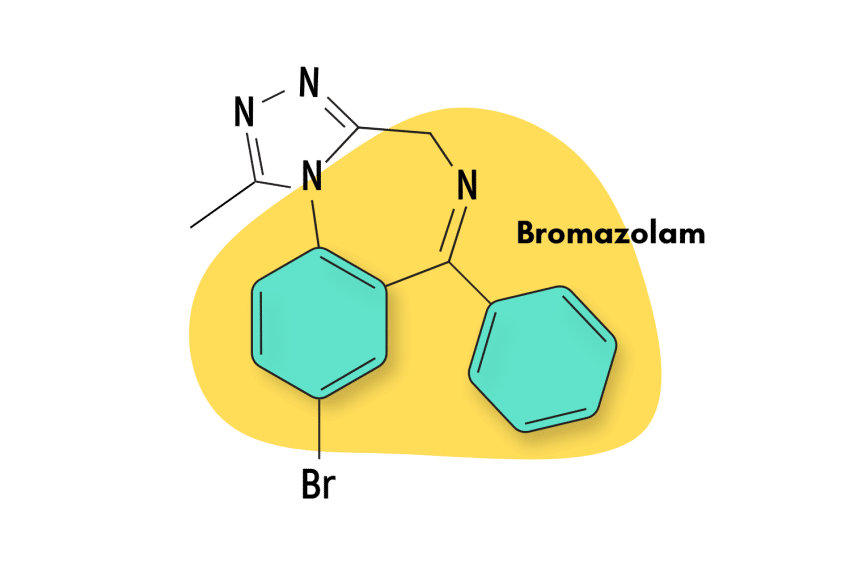Demoxepam: Fact Sheet & Harm Reduction Guide
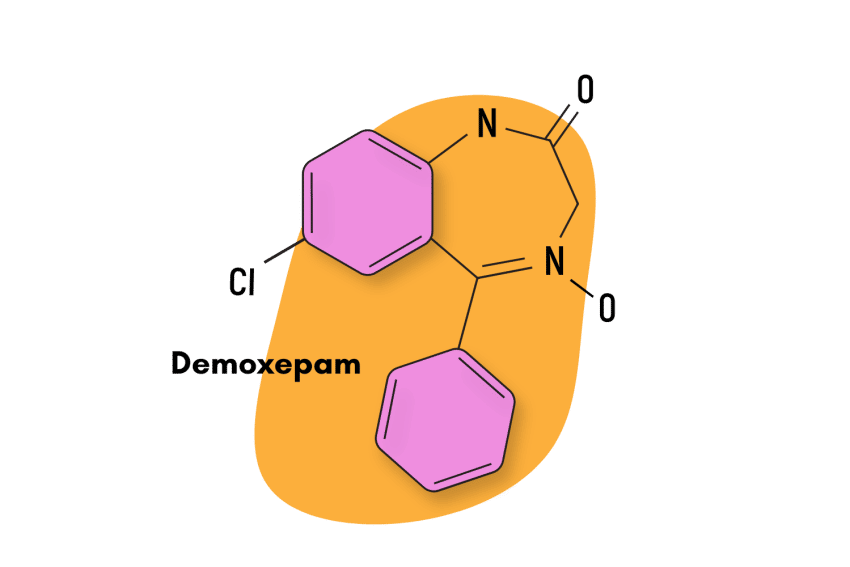
Demoxepam is one of the major metabolites of the first-ever benzodiazepine drug, chlordiazepoxide (AKA Librium).
This compound was made in an attempt to side-step regulations around benzodiazepine drugs. As an active metabolite of chlordiazepoxide, rather than the drug itself, it was available legally through legal loopholes in the United States.
However, these loopholes have since been closed, and demoxepam is now illegal in the US, Canada, Europe, Australia, and many other parts of the world.
The effects of this drug are very similar to that of its parent drug, Librium. It has a very long duration of effects and powerful anxiolytic, sedative, and inebriating effects.
Due to a lack of research, the potency and safety of demoxepam are not well defined. However, it’s believed to share a similar risk profile with chlordiazepoxide and other conventional 1,4-benzodiazepine derivatives.
In this article, we’ll cover everything you need to know about demoxepam, including the recommended dosages, how it works, information on safety, popular alternatives (both natural and synthetic), and much more.
Demoxepam Specs
| Status | Research Chemical |
| Common Dosage | Unspecified |
| PubChem ID: | 13756 |
| CAS# | 963-39-3 |
IUPAC Name: 7-chloro-4-hydroxy-5-phenyl-3H-1,4-benzodiazepine-2-one
Other Names: Demoxepam
Metabolism
Demoxepam is the primary metabolite of chlordiazepoxide [2]. Further breakdown of demoxepam into inactive metabolites follows similar hydrolysis reactions.
A study using dogs found that 10% of the initial dose of demoxepam was present intact in the urine and less than 2% in the feces. Two oxidative pathways led to the formation of two phenolic metabolites, the 5-(4-hydroxyphenyl) derivative and the 9-hydroxy derivative of demoxepam [3].
Duration of Effects
The elimination of demoxepam is slow. It has an elimination half-life of 14-95 hours [4].
How Strong is Demoxepam?
The exact potency of demoxepam is not known. There are not enough viable studies to determine how demoxepam compares to other, more well-established benzodiazepine drugs.
However, at least one study found reduced receptor binding capacity for demoxepam compared to its parent compound, chlordiazepoxide [6]. This implies the drug is less potent than its parent, but to what extent is still not understood.

Benzodiazepine Dosage Equivalency Calculator
**Caution:** Benzodiazepines have a narrow therapeutic window. Dose equivalents may not be accurate in higher doses.
This calculator does not substitute for clinical experience and is meant to serve only as a reference for determining oral benzodiazepine equivalence.
Please consult a medical practitioner before taking benzodiazepines.
How Does Demoxepam Work?
Demoxepam works as a GABA-A receptor agonist. It binds to the receptors and enhances its reaction to GABA already present in the synapses. This action increases the firing threshold of the neurons, reducing the chances of electrical transmission from one neuron to the next.
In simple terms, demoxepam inhibits brain activity to alleviate symptoms of anxiety and stress.
Currently, there is no significant evidence for the presence of secondary pathways by demoxepam. However, we know that its parent compound, chlordiazepoxide, uses other means that also contribute to its effects profile.
For example, some of the anxiolytic benefits of this compound arise due to its inhibition of neuronal activity in amygdala-centered fear circuits. It also blocks EEG arousal from stimulation of the brain stem reticular formation [5].
Researchers have not confirmed that demoxepam shares these properties too, but it’s something to keep in mind.
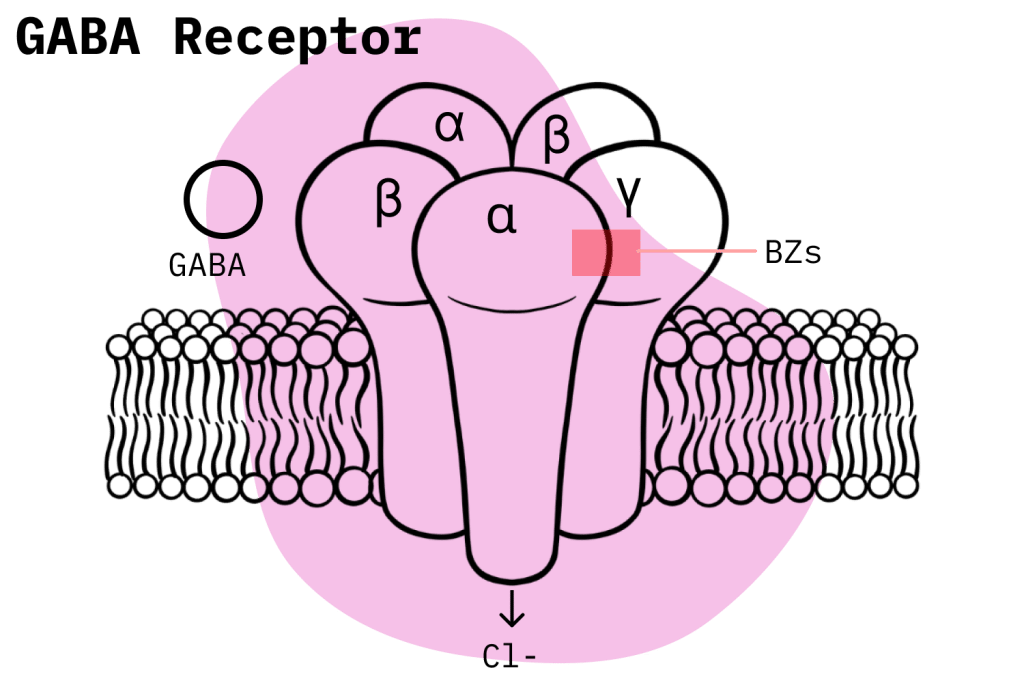
Is Demoxepam Safe? Risks & Side Effects
Studies looking at demoxepam’s toxicology and side effects have not been conducted, but we can still draw meaningful conclusions based on what we know about other closely-related compounds.
There are three major risks to be aware of if you plan to use demoxepam:
- The potential for abuse is high — tolerance and dependency form notoriously quickly to GABAergic compounds. Most doctors don’t prescribe this drug class for longer than 2-weeks because of this risk.
- Benzodiazepines increase the risk of overdosing on other drugs — especially drugs that inhibit brain function, such as alcohol, GHB, phenibut, barbiturates, or other benzodiazepines.
- Long-acting benzodiazepines can accumulate in the bloodstream — if another dose is taken before the first one is eliminated, it can eventually lead to accumulation and overdose,
Side Effects of Demoxepam
Because of their shared mechanism of action, all non-atypical benzodiazepines broadly share the same side effects. Meaningful differences still exist between them, but they apply more to the rate and severity of the side effects than to the side effects themselves.
Since there are no studies we can rely on to evaluate demoxepam’s side effects, we’re likely best served if we look at the profile of its parent compound, chlordiazepoxide.
The side effects identified with chlordiazepoxide are the following:
- Ataxia
- Confusion
- Drowsiness
- Syncope
Other, rarer side effects may include:
- Blood dyscrasias
- Changes in EEG patterns
- Constipation
- Edema
- Extrapyramidal symptoms
- Hepatic dysfunction
- Increased/decreased libido
- Jaundice
- Minor menstrual irregularities
- Nausea
- Skin eruptions
According to the FDA, the necessity for discontinuing therapy due to side effects is uncommon, and chlordiazepoxide’s side effects can usually be controlled by lowering the dosage.

Benzodiazepine Withdrawal & Dependence
Current and potential benzodiazepine users must know that symptoms of physical dependence and withdrawal may arise due to continued benzodiazepine usage. They should also know that benzodiazepine withdrawal is widely recognized as one of the most difficult to deal with, even potentially becoming deadly if left untreated.
To hedge against the risk of dependence, standard medical practice in prescribing benzodiazepines is now to limit the treatment’s duration as much as possible. Along with dosage quantity, it has been shown that extended use of benzodiazepines is one of the most significant factors in forming physical dependence.
The sudden cessation of benzodiazepines following daily use is never recommended. And if physical dependence symptoms arise, a process of gradual discontinuation, known as drug tapering, is recommended. Drug tapering is considered to be a safe procedure, but it is often necessary for a doctor to plan and supervise it.
Regarding individual benzodiazepines and their liability to cause withdrawal symptoms, there seem to be two significant factors: potency and elimination half-life. Potent benzodiazepines with high receptor affinity are more likely to cause dependence. This is why, as a general rule, partial agonist benzodiazepines are less likely to cause dependence than full agonists. And in terms of elimination half-life, short-acting benzos are more correlated with behaviors that wind up in physical dependence.

Harm Reduction: Demoxepam
Benzodiazepine users, especially recreational ones, should try their hardest to implement basic harm-reduction techniques. Our recommendations might seem obvious, but research has shown they’re the most effective at mitigating risk and avoiding serious health events.
For prescription users, most of the recommendations can be summed quite simply: avoid misuse and limit your treatment in terms of dosage and duration. For recreational users, however, things are a bit more complicated.
The recommendations we suggest for recreational users are geared towards avoiding intoxications and overdoses and the capability to react in the face of these events. For example, we suggest that recreational users do their drugs in a piecemeal fashion, which means splitting them up into half or even one-quarter doses. They must wait until they feel the effects of the first dose before they use any more. This basic strategy effectively avoids overdoses as users generally know how much of a given drug they can handle.
We also recommend that recreational users have other people present when they decide to do drugs. Having someone who can look after you and call for help in case anything goes wrong can make a difference. Finally, users should consider acquiring the benzodiazepine receptor antagonist flumazenil, as this compound can work to revert the depressive effect of a benzodiazepine overdose.
Here are some tips and tricks for staying safe while using benzodiazepine drugs:
- 🥣 Don’t mix — Mixing benzodiazepines with other depressants (alcohol, GHB, phenibut, barbiturates, opiates) can be fatal.
- ⏳ Take frequent breaks or plan for a short treatment span — Benzodiazepines can form dependence quickly, so it’s important to stop using the drug periodically.
- 🥄 Always stick to the proper dose — The dosage of benzos can vary substantially. Some drugs require 20 or 30 mg; others can be fatal in doses as low as 3 mg.
- 💊 Be aware of contraindications — Benzodiazepines are significantly more dangerous in older people or those with certain medical conditions.
- 🧪 Test your drugs — If ordering benzos from unregistered vendors (online or street vendors), order a benzo test kit to ensure your pills contain what you think they do.
- 💉 Never snort or inject benzos — Not only does this provide no advantage, but it’s also extremely dangerous. Benzos should be taken orally.
- 🌧 Recognize the signs of addiction — Early warning signs are feeling like you’re not “yourself” without the drug or hiding your habits from loved ones.
- ⚖️ Understand the laws where you live — In most parts of the world, benzodiazepines are only considered legal if given a prescription by a medical doctor.
- 📞 Know where to go if you need help — Help is available for benzodiazepine addiction; you just have to ask for it. Look up “addiction hotline” for more information where you live. (USA: 1-800-662-4357; Canada: 1-866-585-0445; UK: 0300-999-1212).
Demoxepam Drug Interactions
The single deadliest action regarding benzodiazepine use is the concomitant use of depressive compounds like alcohol, opioids, GHB, barbiturates, and other benzodiazepines. This type of mixture can easily lead to an over-depressed CNS and severe respiratory depression: the leading cause of death among drug overdoses.

Demoxepam Contraindications
All benzodiazepines share the same contraindications. Users must be sure to know what they are so they don’t unknowingly expose themselves to risk.
Demoxepam’s contraindications are:
- Bronchitis
- Chronic obstructive pulmonary disease (COPD)
- Conjunctive use of barbiturates, opiates, or those suffering from alcoholism
- Contraindications for benzodiazepines are:
- Intellectual disabilities due to frequent paradoxical reactions
- Lactation
- Luckily, all benzodiazepines share a common set of contraindications, so they’re generally easy to remember.
- Major depression
- Myasthenia gravis
- Over the age of 65 (high risk)
- Personality disorders
- Pregnancy
- Sleep apnea
- Use of driving or heavy machinery
Similar Benzodiazepines
Demoxepam is most similar to chlordiazepoxide, but other compounds offer similar effect profiles as well.
Demoxepam is considered a weak, long-acting benzodiazepine in the 1,4-benzodiazepine subgroup. Other compounds that fit this description include bromazepam (Lectopam), cinolazepam, clonazepam (Klonopin), diclazepam, flunitrazepam (Rohypnol), lorazepam (Ativan), metaclazepam (Talis), and oxazepam (Serax).
Let’s compare and contrast demoxepam with its most similar alternatives.
Chlordiazepoxide (Librium)
The most similar alternative to demoxepam is its parent drug, chlordiazepoxide.
Librium is longer-lasting, has much more research to establish its relative safety, and is widely available on the market. It’s also the only legal compound of the two.
Subjective user reports suggest qualitative differences between these two drugs, but the reports are often conflicting. Some suggest demoxepam is more “groggy” and “sleepy” than chlordiazepoxide, while others suggest demoxepam lacks the strong sedative quality that makes chlordiazepoxide problematic for recreational users.
The truth is that there isn’t enough information available to elucidate the specific differences between these two drugs.
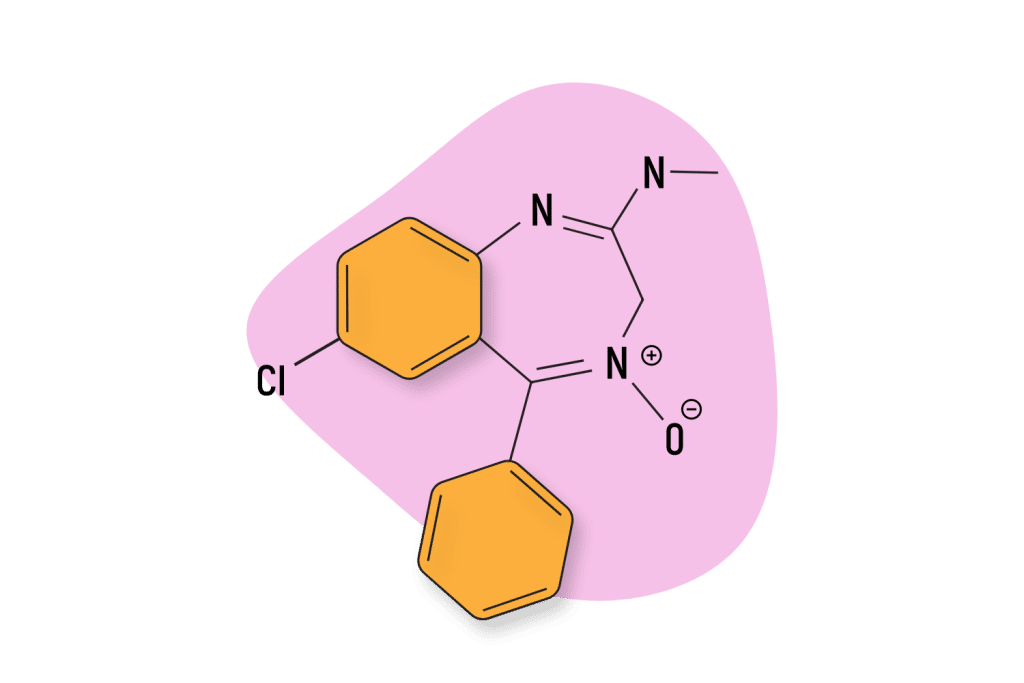
Oxazepam (Serax)
Demoxepam is known to be an intermediate in the production of oxazepam, suggesting at least some level of structural similarity between them. Both compounds are thought to be of low potency, but oxazepam has a much shorter half-life (five to six hours) when compared to demoxepam (14 to 95 hours).
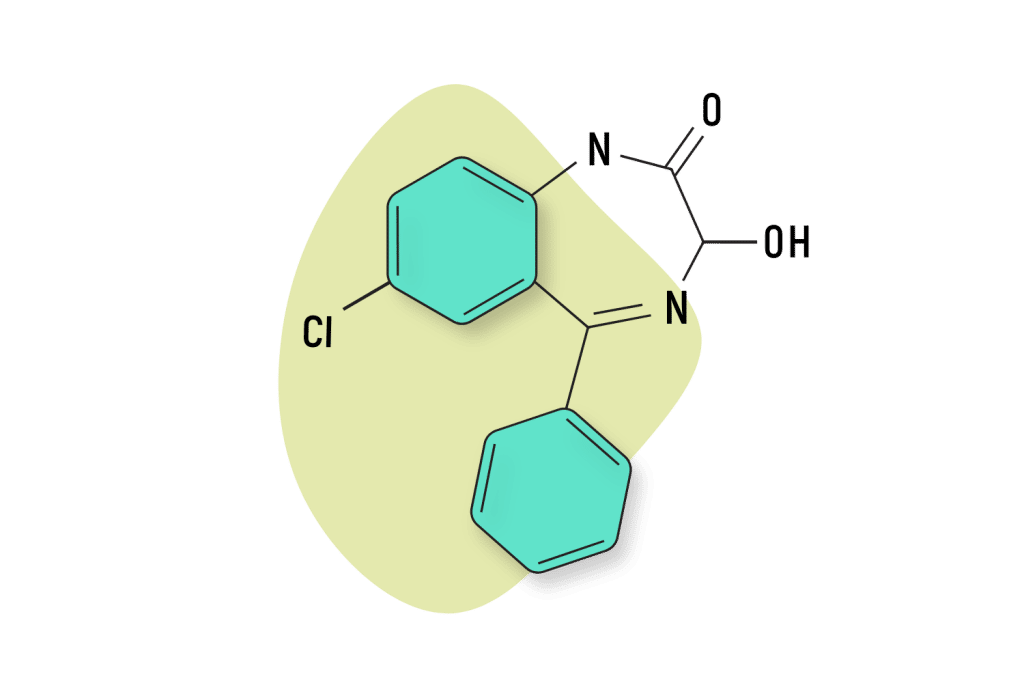
Natural Alternatives to Benzodiazepines
A handful of natural products offer similar effects to benzodiazepines but with significantly lower risks for things like addiction and overdose-related injury.
It’s important to note that no natural substance will offer the same intensity as synthetic benzodiazepines — but they may be strong enough to give users a viable alternative for managing conditions like anxiety or insomnia without exposing themselves to the high level o risk associated with benzodiazepines.
The best herbal alternatives to benzodiazepines include kava (Piper methysticum) and valerian (Valerian officinalis). Both herbs contain a slurry of active ingredients that act through the same GABA receptors benzodiazepines target.
Another plant, kratom (Mitragyna speciosa), doesn’t focus as much on GABA but, through its interaction with other neurotransmitters, can offer very similar benefits (sedation, relaxation, reduced anxiety, muscle relaxation).

Demoxepam FAQs
Is demoxepam well absorbed?
A dog study found that demoxepam exhibited high absorption levels [3].
What is demoxepam’s metabolic relation to other benzodiazepines?
Demoxepam is one of the principal byproducts of chlordiazepoxide and is also an intermediate in the synthesis of oxazepam. It is also used in one of the syntheses of medazepam.
Is demoxepam phototoxic?
Yes. Studies have confirmed that chlordiazepoxide and its major metabolites are phototoxic [7]. Phototoxicity is when a compound can cause a chemically induced skin irritation that requires light and does not involve the immune system.
References
- Ouédraogo, M., Maesschalck, E. D., Soentjens-Werts, V., & Dubois, J. (2009). In vitro cytotoxicity study of oxaziridines generated after chlordiazepoxide, demoxepam, and desmethylchlordiazepoxide UV irradiation. Drug and chemical toxicology, 32(4), 417-423.
- Han, W. W., Yakatan, G. J., & Maness, D. D. (1976). Kinetics and mechanisms of hydrolysis of 1, 4‐benzodiazepines I: Chlordiazepoxide and demoxepam. Journal of Pharmaceutical Sciences, 65(8), 1198-1204.
- Schwartz, M. A., Postma, E., & Kolis, S. J. (1971). Metabolism of demoxepam, a chlordiazepoxide metabolite, in the dog. Journal of Pharmaceutical Sciences, 60(3), 438-444.
- Schwartz, M. A., Postma, E., & Gaut, Z. (1971). Biological half‐life of chlordiazepoxide and its metabolite, demoxepam, in man. Journal of Pharmaceutical Sciences, 60(10), 1500-1503.
- Masiulis, S., Desai, R., Uchański, T., Serna Martin, I., Laverty, D., Karia, D., … & Aricescu, A. R. (2019). GABAA receptor signaling mechanisms revealed by structural pharmacology. Nature, 565(7740), 454-459.
- Vinkers, C. H., Korte-Bouws, G. A., Sastre Toraño, J., Mirza, N. R., Nielsen, E. Ø., Ahring, P. K., … & Olivier, B. (2010). The rapid hydrolysis of chlordiazepoxide to demoxepam may affect the outcome of chronic osmotic minipump studies. Psychopharmacology, 208(4), 555-562.
- Cornelissen, P. J. G., Beijersbergen, G. M. J., Henegouwen, V., & Mohn, G. R. (1980). Structure and photobiological activity of 7-chloro-1,4-benzodiazepines. Studies on the phototoxic effects of chlordiazepoxide, desmethylchlordiazepoxide, and demoxepam using a bacterial indicator system. Photochemistry and Photobiology, 32(5), 653-659.


